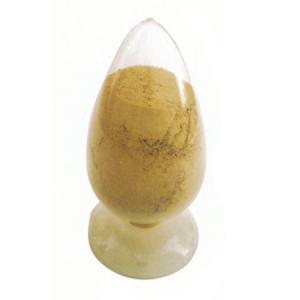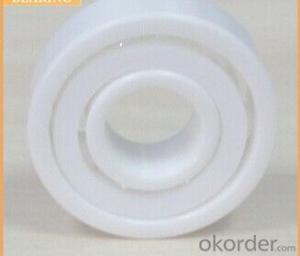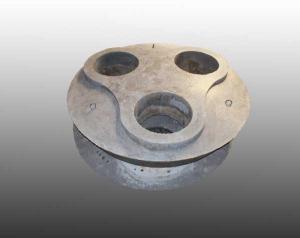Raw Carbon Material Made By Carbon Filler
- Loading Port:
- China main port
- Payment Terms:
- TT or LC
- Min Order Qty:
- 20 m.t
- Supply Capability:
- 1000 m.t/month
OKorder Service Pledge
OKorder Financial Service
You Might Also Like
Calcined Petroleum Coke
FC:98.5%min,
S:0.5%max
A:0.8%max
V:0.7%max
Mositure:0.5%max
Size:1-5mm
Technology:
Laborary Equpment
In our lab,we has a high precision balance,mullfe furnace,sample making machine, dring box,sulfur measurement instrument and other calibratiing equipments.As a result,before deliverung to our customers,our products have to pass a strict test to ensure the quality and components.The testing reports will be sent to our customers to confirm untill they satisfy with it.
Packaging & Delivery
Packaging Detail:25kg paper bag into 1t weaving bag 5kg, 10kg and 20kg weaving bag into 1t weaving bag 25kg weaving bag put on pallet covered with entanglement wrap product direct into packing bag 25kg paper bag put on pallet covered with entanglement Wrap 25kg weaving bag into 1t weaving bag.
Delivery Details: 7 days

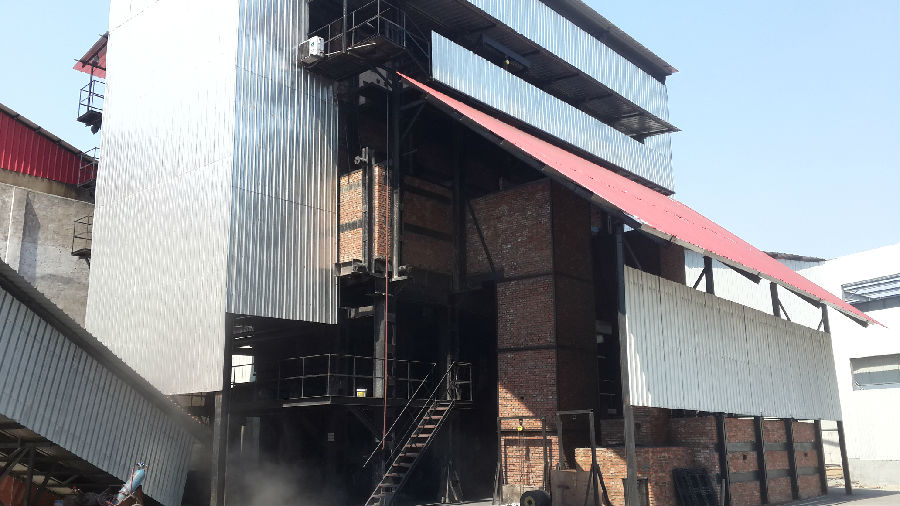
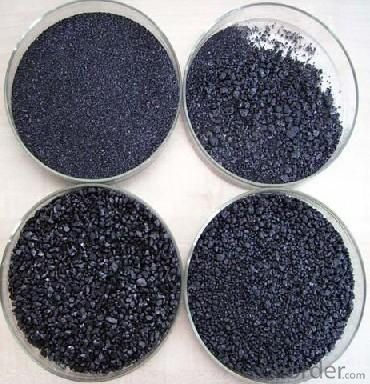
Factory Background
The factory is majorly running and operating carbon additive (pitch coke, calcined petroleum coke and anthracite), low nitrogen carbon additive, and brake pad making material. Company is the long term supplier of Sinosteel Corporation, Shanghai Carbon Corporation, the plant of SGL Group the Carbon Company in China and some largest special carbon products producing plants.
YUAI also supplies huge amout of high quality carbon additive and graphite carbon additive to steel plants, foundries and ferrotungsten plants. YUAI has been assigned by BAO STEEL as the only organization for processing pitch coke for export purpose. The group’s major products are constantly exported to Japan, Korea, Malaysia, South East Asia countries, Europe and America, which receive praises by our consumers.
The group has invested numbers of calcinators in Anhui China to ensure the capability of producing and processing huge amount of carbon additive. Further investment is on process. According to the orders from customers, YUAI is able to processing and providing different specifications of carbon additive and other products. To provide best quality of products and to offer customers most satisfied service is YUAI’s operating objectives.
Our Service:
1. Your inquiry related to our products or prices will be replied in 24hours.
2. Manufacturer with large capacity, ensure the fast production cycle after confirmed the order.
3. Our professional technicians will answer your entire enquiry in patient.
4. To meet the refractory solutions, we can serve as your instructions.
5. Protection of sales area and private information for our entire customer.
If you’ve kind enquiries, please don’t hesitate to let us know. ^_^
- Q:How do monolithic refractories resist chemical attacks from molten metals and slag?
- Monolithic refractories are specifically designed to resist chemical attacks from molten metals and slag. They possess several key characteristics that enable them to withstand these aggressive environments. Firstly, monolithic refractories are composed of high-quality materials that have excellent chemical resistance. These materials, such as alumina, magnesia, and chrome, have a high melting point and are stable even when exposed to extreme temperatures and corrosive substances. This chemical stability ensures that the refractory can maintain its integrity and structural strength when in contact with molten metals and slag. Secondly, monolithic refractories have a dense and compact structure. This microstructure helps to prevent the penetration of molten metals and slag into the refractory material. The dense structure acts as a barrier, limiting the contact between the corrosive substances and the refractory. This reduces the chances of chemical reactions and erosion, thereby enhancing the resistance of the refractory to chemical attacks. Furthermore, monolithic refractories often contain additives and binders that enhance their chemical resistance. These additives create a protective layer on the refractory surface, acting as a shield against chemical attacks. They can also react with certain corrosive substances, forming stable compounds that further resist the penetration and corrosion of the refractory material. Additionally, monolithic refractories are designed to have low porosity. This low porosity minimizes the absorption of molten metals and slag, preventing them from infiltrating the refractory and causing damage. By reducing the permeability of the material, the refractory can maintain its structural integrity and resist chemical attacks over prolonged periods. In conclusion, monolithic refractories resist chemical attacks from molten metals and slag through their high-quality materials, dense structure, additives, and low porosity. These combined properties allow the refractories to withstand aggressive environments and maintain their performance and longevity in industrial applications.
- Q:How do monolithic refractories perform in ladle lining applications in the iron and steel industry?
- Monolithic refractories are widely used in ladle lining applications in the iron and steel industry due to their excellent performance and durability. These refractories, which are made from a single material composition, offer numerous advantages over traditional brick linings. One of the key benefits of monolithic refractories in ladle lining applications is their superior resistance to thermal shock. Ladles in the iron and steel industry are subjected to extreme temperature fluctuations during the steelmaking process, including the pouring of molten metal and the subsequent cooling. Monolithic refractories are specifically designed to withstand these rapid temperature changes without cracking or spalling, ensuring the integrity of the ladle lining. In addition to thermal shock resistance, monolithic refractories also exhibit excellent resistance to chemical attack. Ladles in the iron and steel industry are exposed to highly corrosive molten metal and slag, which can degrade the lining materials over time. However, monolithic refractories are formulated with high-quality raw materials that offer exceptional chemical stability, preventing the erosion and penetration of corrosive substances. Furthermore, monolithic refractories provide superior mechanical strength compared to traditional brick linings. This is particularly important in ladle lining applications, as the lining needs to withstand the weight of the molten metal and the mechanical stresses associated with ladle handling and transportation. Monolithic refractories have excellent load-bearing capabilities, ensuring the structural integrity of the ladle lining even under heavy loads. Another advantage of monolithic refractories is their ease of installation. Unlike brick linings that require meticulous bricklaying, monolithic refractories can be installed using various techniques, such as gunning or casting, allowing for faster and more efficient lining repairs or replacements. This reduces downtime during ladle maintenance, leading to increased productivity and cost savings for iron and steel manufacturers. Overall, monolithic refractories perform exceptionally well in ladle lining applications in the iron and steel industry. Their resistance to thermal shock and chemical attack, superior mechanical strength, and ease of installation make them an ideal choice for ensuring the longevity and reliability of ladles in steelmaking operations.
- Q:How do monolithic refractories contribute to energy efficiency in iron and steel production?
- Enhancing energy efficiency in iron and steel production processes is a crucial role played by monolithic refractories. These refractories, which are unshaped materials, are utilized to line the components of furnaces, kilns, and other high-temperature equipment involved in the production of iron and steel. One method by which monolithic refractories contribute to energy efficiency is through their excellent insulation properties. These materials possess low thermal conductivity, effectively reducing heat transfer from the furnace or kiln to the surrounding environment. By minimizing heat loss, monolithic refractories aid in maintaining high temperatures within the production units, ultimately reducing the energy required to sustain the desired operating conditions. Moreover, monolithic refractories offer exceptional resistance to thermal shock and wear, ensuring the longevity of the lining materials. This durability diminishes the need for frequent repairs and replacements, resulting in less downtime and increased operational efficiency. Consequently, energy is conserved as the production units can continuously operate at optimal temperatures without interruptions. Additionally, monolithic refractories exhibit excellent resistance to chemical reactions, corrosion, and erosion caused by molten metals and slag. This resistance decreases the formation of cracks and defects in the lining, which can compromise the insulation and increase heat loss. By maintaining a robust and intact lining, monolithic refractories contribute to energy efficiency by minimizing heat escape and ensuring the efficient utilization of energy for the iron and steel production processes. Furthermore, the utilization of monolithic refractories allows for design flexibility in the construction of furnaces and kilns. Their ability to be shaped and applied in various configurations enables the creation of optimized lining structures that enhance heat transfer and combustion efficiency. This flexibility empowers engineers and operators to design and modify the production units to maximize energy efficiency and minimize energy wastage. In conclusion, monolithic refractories significantly contribute to energy efficiency in iron and steel production through their excellent insulation, durability, resistance to thermal and chemical degradation, and design flexibility. By reducing heat loss, minimizing repairs and replacements, and optimizing heat transfer, these refractories play a vital role in conserving energy and improving the overall sustainability of the iron and steel industry.
- Q:What are the specific requirements of monolithic refractories for steel ladle purging applications?
- Monolithic refractories used in steel ladle purging applications have specific requirements to ensure optimal performance and durability. Firstly, these refractories need to have high thermal stability and resistance to thermal shock due to the extreme temperatures involved in the steelmaking process. This is important to prevent any cracking or spalling of the refractory lining. In addition, monolithic refractories for ladle purging applications should have excellent corrosion resistance against molten steel and slag. They need to withstand the aggressive chemical environment without any significant deterioration, as this could lead to contamination of the steel and affect its quality. Another important requirement is good erosion resistance. The refractories should be able to withstand the high velocity of the purging process, where argon or other gases are injected into the ladle to remove impurities. This erosion resistance ensures that the refractory lining remains intact and does not wear away during operation. Furthermore, monolithic refractories for ladle purging applications should have low porosity and high density. This prevents the penetration of molten steel and slag into the refractory lining, reducing the risk of thermal spalling and corrosion. Lastly, these refractories should have good thermal conductivity to efficiently transfer heat from the steel to the refractory lining, allowing for better temperature control and energy efficiency during the purging process. Overall, the specific requirements of monolithic refractories for steel ladle purging applications include high thermal stability, corrosion resistance, erosion resistance, low porosity, high density, and good thermal conductivity. Meeting these requirements ensures the refractories can withstand the harsh conditions of the steelmaking process, maintain their integrity, and contribute to the production of high-quality steel.
- Q:How do monolithic refractories withstand high temperatures and thermal shocks?
- Monolithic refractories are able to withstand high temperatures and thermal shocks due to their unique composition and design. These refractories are made from a single piece or structure, hence the term "monolithic". This structural integrity allows them to resist the extreme heat and sudden temperature changes experienced in high-temperature applications. One key factor that enables monolithic refractories to withstand high temperatures is the use of high-quality raw materials. These materials are carefully selected for their ability to withstand heat and thermal stress. Common components include silica, alumina, magnesia, and other refractory minerals with high melting points. Additionally, the manufacturing process plays a crucial role in enhancing the thermal resistance of monolithic refractories. The raw materials are mixed with binders, such as clay or cement, to form a homogenous mixture. This mixture is then shaped and installed in its final position, either by pouring or gunning, depending on the application. The binder ensures that the refractory maintains its shape and integrity during thermal cycling. Furthermore, monolithic refractories possess excellent thermal conductivity and low thermal expansion properties. This means that they can efficiently transfer and dissipate heat, minimizing the risk of thermal stress and cracking. The low thermal expansion also reduces the likelihood of spalling or delamination, which is crucial for withstanding thermal shocks. Another factor contributing to the high-temperature resistance of monolithic refractories is their ability to form a protective layer or slag at the surface. This layer acts as a barrier, preventing the refractory from direct contact with corrosive materials or aggressive atmospheres. It helps to improve the refractory's longevity and resistance to thermal shocks. Overall, the combination of high-quality raw materials, careful manufacturing techniques, and beneficial thermal properties enables monolithic refractories to withstand high temperatures and thermal shocks. These refractories are widely used in various industries, including steel, cement, glass, and petrochemical, where they serve as reliable linings in furnaces, kilns, and other high-temperature equipment.
- Q:How do monolithic refractories improve the efficiency of ladle and tundish purging furnaces?
- Monolithic refractories improve the efficiency of ladle and tundish purging furnaces by providing better insulation, reducing heat loss, and enhancing the overall thermal efficiency of the furnaces. These refractories have high thermal conductivity and low thermal expansion, allowing for better heat transfer and uniform temperature distribution. Additionally, their superior resistance to thermal shocks and chemical attacks prolongs the lifespan of the furnaces, reducing maintenance and downtime.
- Q:How do monolithic refractories respond to changes in thermal conditions?
- Monolithic refractories have the ability to withstand and adapt to changes in thermal conditions. They have a high thermal shock resistance, meaning they can handle rapid changes in temperature without cracking or breaking. Additionally, they exhibit good thermal conductivity, allowing them to efficiently conduct and distribute heat. Overall, monolithic refractories demonstrate a stable and reliable response to changes in thermal conditions.
- Q:How do monolithic refractories help in enhancing the durability of iron and steel equipment?
- Monolithic refractories play a crucial role in enhancing the durability of iron and steel equipment by providing high resistance to extreme temperatures, chemical attack, and mechanical wear. These refractories are composed of a single, homogeneous material, making them more robust and reliable compared to traditional brick or castable refractories. The high-temperature resistance of monolithic refractories allows them to withstand the extreme heat generated in iron and steel manufacturing processes, such as melting, casting, and forging. They can withstand temperatures exceeding 3000°F (1650°C) without losing their structural integrity, preventing premature failure of the equipment. This thermal resistance helps to maintain the shape and structure of the refractory lining, ensuring the efficient and consistent performance of the equipment. In addition to high heat resistance, monolithic refractories also exhibit excellent chemical resistance. Iron and steel equipment often comes into contact with corrosive substances, such as molten metal, slag, and various chemical compounds. The monolithic refractories' ability to resist chemical attack prevents degradation and erosion of the equipment's lining, extending its lifespan. Furthermore, monolithic refractories provide exceptional mechanical strength and wear resistance. The continuous exposure to abrasive materials, physical impacts, and mechanical stress can cause severe damage to the equipment. However, the dense and compact structure of monolithic refractories makes them highly resistant to mechanical wear, minimizing the risk of erosion and spalling. The flexibility and versatility of monolithic refractories are also advantageous in enhancing the durability of iron and steel equipment. They can be easily molded, shaped, and installed in complex geometries, ensuring a tight and precise fit. This eliminates the formation of gaps or weak points, which could lead to thermal or chemical leakage, reducing the risk of equipment failure. Overall, the use of monolithic refractories in iron and steel equipment significantly enhances its durability by providing exceptional resistance to high temperatures, chemical attack, and mechanical wear. These refractories ensure the longevity and reliability of the equipment, resulting in improved operational efficiency and cost-effectiveness in the iron and steel industry.
- Q:What are the recommended drying procedures for monolithic refractories?
- Drying methods for monolithic refractories differ based on the specific type and composition of the material. Nevertheless, there exist general guidelines that can be adhered to. Initially, it is crucial to eliminate any excess moisture from the refractory material prior to drying. This can be achieved by storing the refractory in a dry environment or utilizing a dehumidifier if necessary. Once the refractory material has been adequately dried, the drying process can commence. It is advisable to initiate the process with a low drying temperature in order to prevent cracking or spalling. Gradually raising the temperature over time will allow for the gradual release of moisture. This can be accomplished by employing a controlled drying oven or furnace. The duration of the drying process will differ depending on the thickness and composition of the refractory. It is imperative to adhere to the manufacturer's guidelines for the specific refractory material being utilized, as they will provide the recommended drying duration and temperature range. Throughout the drying process, it is important to closely monitor the refractory for any indications of cracking or spalling. Should any cracks or damage occur, the drying process should be immediately halted to prevent further harm. It may be necessary to repair or replace the damaged areas before proceeding with the drying process. Once the refractory material has been fully dried, it is crucial to gradually cool it down to avoid thermal shock. This can be achieved by gradually reducing the temperature over time or allowing the refractory to naturally cool in a controlled environment. In conclusion, the recommended drying procedures for monolithic refractories involve gradually increasing the temperature over time, closely monitoring for any signs of damage, and slowly cooling down the refractory to prevent thermal shock. It is essential to adhere to the manufacturer's guidelines and recommendations for the specific refractory material being utilized to ensure proper drying and optimal performance.
- Q:How do monolithic refractories withstand the chemical attacks in copper smelting applications?
- Monolithic refractories have the ability to withstand chemical attacks in copper smelting applications due to their unique properties and composition. These refractories are specifically designed to resist the harsh and corrosive environment found in copper smelting processes. Firstly, monolithic refractories are made from high-quality materials such as alumina, silica, and magnesia, which have high melting points and are chemically stable. These materials are carefully selected to ensure they can withstand the corrosive effects of copper smelting, such as the presence of sulfur compounds and acidic gases. The refractory's composition also includes various additives and bonding agents that enhance its resistance to chemical attacks. Additionally, monolithic refractories have excellent thermal shock resistance, meaning they can withstand rapid temperature changes without cracking or spalling. In copper smelting applications, the extreme temperatures involved can cause thermal stress on the refractory lining. The refractories' ability to withstand these temperature fluctuations is crucial in preventing the formation of cracks and ensuring their long-term performance. Furthermore, monolithic refractories have a dense and compact structure, which provides an effective barrier against the penetration of molten copper and other corrosive substances. This dense structure prevents the chemical attacks from penetrating the refractory lining, thus ensuring its durability and longevity. Moreover, monolithic refractories offer superior erosion resistance, which is essential in copper smelting applications where high-velocity gases and molten metal flows can cause erosion of the refractory lining. The refractory's erosion resistance prevents the degradation of the lining and maintains its structural integrity. Overall, monolithic refractories are specially designed to withstand the chemical attacks encountered in copper smelting applications. By utilizing high-quality materials, incorporating additives, and possessing excellent thermal shock resistance, density, and erosion resistance, these refractories provide a reliable and durable lining that can withstand the harsh conditions of copper smelting processes.
1. Manufacturer Overview |
|
|---|---|
| Location | |
| Year Established | |
| Annual Output Value | |
| Main Markets | |
| Company Certifications | |
2. Manufacturer Certificates |
|
|---|---|
| a) Certification Name | |
| Range | |
| Reference | |
| Validity Period | |
3. Manufacturer Capability |
|
|---|---|
| a)Trade Capacity | |
| Nearest Port | |
| Export Percentage | |
| No.of Employees in Trade Department | |
| Language Spoken: | |
| b)Factory Information | |
| Factory Size: | |
| No. of Production Lines | |
| Contract Manufacturing | |
| Product Price Range | |
Send your message to us
Raw Carbon Material Made By Carbon Filler
- Loading Port:
- China main port
- Payment Terms:
- TT or LC
- Min Order Qty:
- 20 m.t
- Supply Capability:
- 1000 m.t/month
OKorder Service Pledge
OKorder Financial Service
Similar products
New products
Hot products
Hot Searches
Related keywords





















